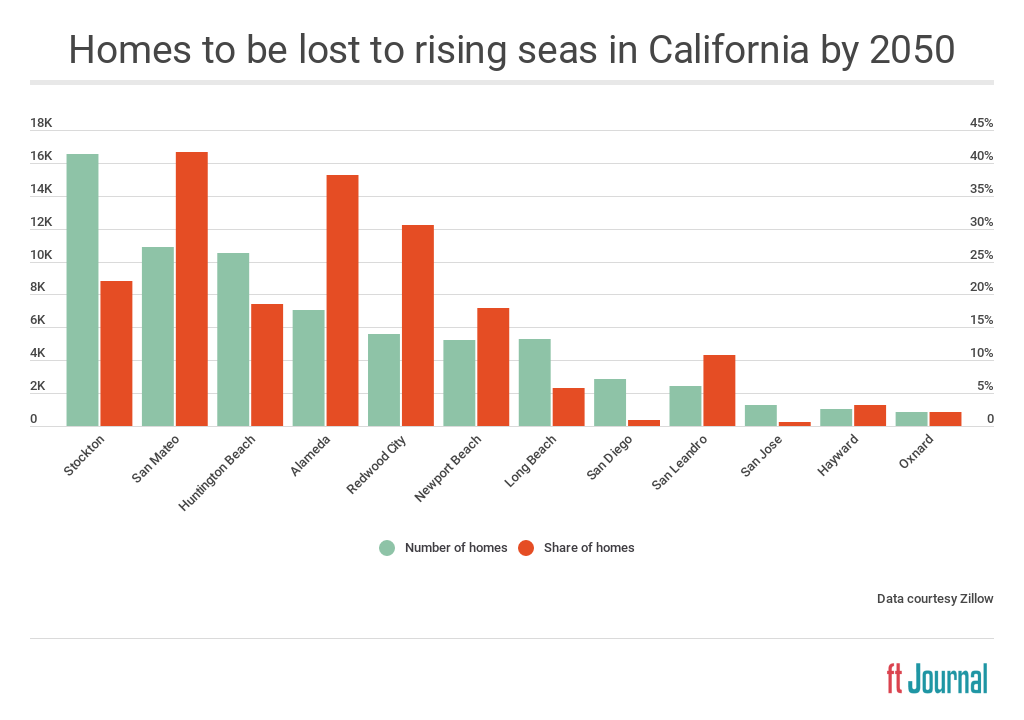The ocean — one of California’s most treasured assets — is creeping closer each year.
Here in California and across the nation, media reports of storms and flooding are making sea level rise less of a thought experiment and more of a dangerous reality. The hazards of sea level rise are increasing each year, and the implications for housing and other types of real estate are huge.
Rising sea levels threaten California homes through:
- coastal flooding, especially dangerous during big storms; and
- erosion, causing gradually shifting coastlines and vanishing beaches.
A new report by Zillow outlines just how many homes are in danger of being lost due to flooding from sea level rise by 2050. This report shows more accurately the effects of sea level rise on homes, as it considers storm surge and coastal flooding, while previously it had reported just on the homes to be lost due to a rising sea level on a calm day.

This chart shows the number of homes that will be underwater by 2050 (the green columns), and these numbers converted to the percentage of homes that will be underwater in each area (the red columns).
Moreover, these figures do not include any of the other losses to be expected, including:
- compromised wastewater systems;
- the loss of roads and other transportation options;
- disruption of local economies as residents are prevented from getting to and from jobs;
- delays in emergency services; and
- the loss of commercial and government property.
Stockton will see the most homes swallowed by rising seas in the coming decades, with around 16,552 homes predicted to be lost, translating to 22% of the city’s housing stock. However, the area with the highest percentage of homes to be lost is San Mateo, where 41.6% of all homes in the city will be underwater, translating to 10,890 homes.
Some of this data may seem surprising to locals, as at first glance a city like San Francisco may seem more vulnerable to sea level rise than, say, Stockton. But the main difference between these two cities is each city’s current preventative measures.
Preventing the effects of sea level rise
Many California cities have invested in structures to hold back the threats of sea level rise, such as levees and sea walls. Further, numerous efforts are underway to educate communities and invest in more improvements to hold back sea level rise.
But what can coastal residents do at the individual level to prepare for rising seas?
Today’s homebuyers can protect themselves now by doing their full due diligence before purchasing along the coast — or inland areas prone to flooding. Property needs to be inspected for signs of erosion before purchase, as basic home insurance plans do not cover property damage or loss due to sea level rise or erosion.
However, most flood insurance plans will cover erosion due to floods. Therefore, purchasing adequate flood insurance in coastal and flood-prone areas is crucial for the forward-minded homebuyer.
Finally, current homeowners and real estate professionals living and working in coastal communities susceptible to sea level rise can be vocal supporters of actions to lessen the effects of climate change. 2050 may seem like a long time away, but change doesn’t happen overnight. Flood prevention plans are becoming more essential as sea levels rise, and it’s important for local communities to prepare now to lessen the personal, economic and financial losses to occur down the road.
Related article:















Wasn’t this already supposed to have happened like 20 years ago?